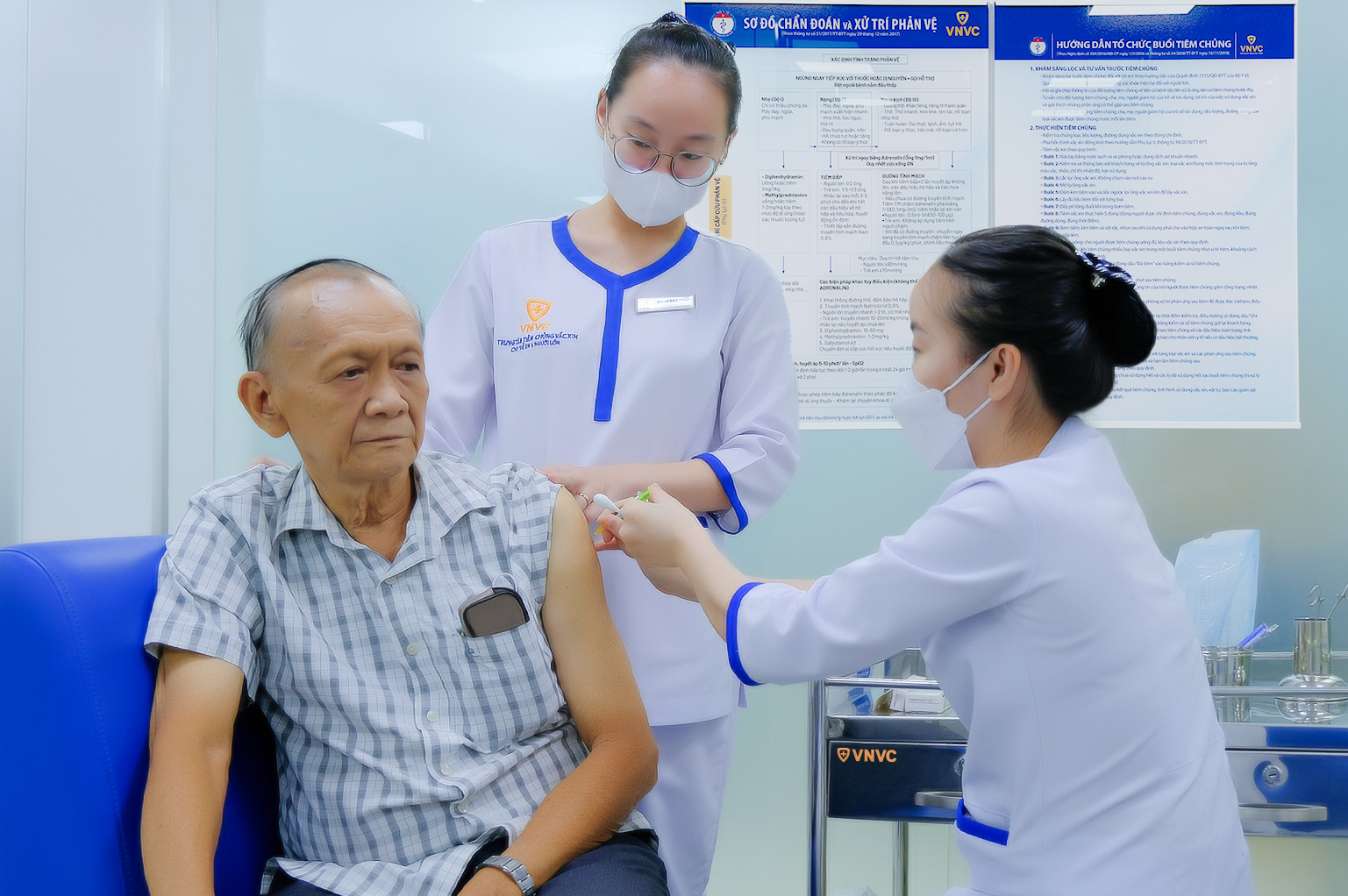Doctor Tran Huynh Tan, Medical Manager of VNVC Vaccination System, made the above statement after recently recording several cases of heart attacks, including among young people. According to Ministry of Health statistics, around 200,000 people die from cardiovascular disease in Vietnam each year, accounting for 33% of all deaths. Of these, 85% are due to heart attacks and strokes.
Heart attacks occur suddenly and require early recognition and prompt treatment to avoid missing the "golden" intervention window. According to Dr. Tan, it's crucial to distinguish heart attacks from the following conditions:
 |
Heart attacks occur suddenly; it's crucial to recognize the signs for timely treatment. Illustration: Vecteezy |
Flu
The flu is an acute infectious disease caused by the influenza virus, spread through the respiratory tract when an infected person coughs, sneezes, or talks. In the early stages, flu symptoms such as muscle aches, fatigue, dry cough, and shortness of breath can be easily mistaken for signs of a heart attack or angina.
According to Dr. Tan, it's possible to differentiate between the two conditions. People experiencing a heart attack may feel chest pain that lasts for several minutes, radiating from the chest to the shoulders, neck, jaw, or arms. They may also experience shortness of breath, cold sweats, nausea, or dizziness. Flu sufferers, on the other hand, rarely experience severe chest pain; their symptoms mainly focus on the respiratory system, such as fever, sore throat, nasal congestion, and cough. However, in severe cases, patients may experience vomiting, drowsiness, or seizures.
Meningococcal disease
According to Dr. Tan, these two illnesses are very difficult to distinguish. Many symptoms of meningococcal disease are similar to those of a heart attack, including muscle aches, fatigue, nausea, vomiting, loss of appetite, shortness of breath, and general malaise.
In the first 8 hours, meningococcal symptoms resemble other common respiratory illnesses, such as headache, sore throat, muscle aches, thirst, and fever. In the following 9-15 hours, the body experiences loss of appetite, nausea, vomiting, leg pain, discomfort, drowsiness, and shortness of breath. From 16-24 hours, the patient may experience diarrhea, stiff neck, cold hands and feet, develop a rash, and subsequently fall into a coma, become confused, and potentially die.
In addition, meningococcal disease can cause inflammation of the outer lining of the heart, urethra, lungs, conjunctiva, and joints. Meningococcal meningitis, in particular, can leave many physical and mental after-effects, such as scars from skin necrosis, limb amputation, deafness, blindness, psychological disorders, and intellectual disabilities.
Pneumococcal pneumonia
Individuals with pneumococcal pneumonia also exhibit symptoms similar to those of a heart attack. Both conditions present with chest pain, shortness of breath or rapid breathing, and cold sweats. Muscle pain can spread to the shoulders or back when the infected person takes a deep breath, while a heart attack also involves chest tightness.
Pneumococcal pneumonia has more specific symptoms, such as a persistent cough with phlegm or blood. In young children, warning signs include refusal to feed and unusual crying. If not diagnosed and treated promptly, pneumococcal pneumonia can progress rapidly, causing serious complications such as pleural effusion, meningitis, sepsis, and acute respiratory failure. The risk is even higher for young children, the elderly, and those with underlying health conditions.
 |
Elderly individuals receive pneumococcal vaccines at the VNVC Vaccination System. Photo: Binh An |
Prevention
If symptoms such as chest tightness, shortness of breath, unusual fatigue, cold sweats, nausea, or pain radiating to the shoulders, neck, or back appear, Dr. Tan advises people to immediately go to a medical facility or call emergency services for prompt intervention. Individuals should not be complacent or self-diagnose.
Furthermore, upon recognizing signs of a heart attack in someone, immediate first aid should be administered. If the patient loses consciousness, stops breathing, or experiences cardiac arrest, cardiopulmonary resuscitation should be performed. When the ambulance arrives, family members should provide complete information about the symptoms, onset time, medications taken, and medical history. After treatment, patients are monitored and placed on long-term medication to prevent re-narrowing of the arteries, and they should also adjust their lifestyle to reduce the risk of recurrent heart attacks.
Vaccines are available to prevent the illnesses mentioned above that mimic heart attack symptoms, thus preventing serious complications. For the flu, Vietnam currently has vaccines against common virus strains, including influenza A/H1N1, A/H3N2, and influenza B. Annual booster shots are needed to address currently circulating strains as recommended by the WHO and to bolster antibody levels that decline over time.
For pneumococcal disease, 5 types of vaccines are available in Vietnam: pneumococcal 10, 13, 15, 20, and 23. A doctor will recommend the appropriate vaccine based on age and vaccination history.
For meningococcal disease, there are currently 4 types of vaccines: Bexsero (Italy) for people aged 2 months to 50 years, preventing group B meningococcal disease; VA-Mengoc-BC (Cuba) for ages 6 months to 45 years, preventing groups B and C; Menactra (USA) for ages 9 months to 55 years, preventing group ACYW-135; and MenACYW (France) for children from 12 months of age with no upper age limit for adults.
To enhance disease prevention, people need to improve their overall health and cardiovascular health in particular. Common measures include a diverse and nutritious diet, at least 150 minutes of exercise per week, adequate sleep, and avoiding prolonged stress. Regular screening for cardiovascular risk factors such as hypertension, diabetes, and dyslipidemia is recommended, along with quitting unhealthy habits like smoking and excessive alcohol consumption.
Binh An












